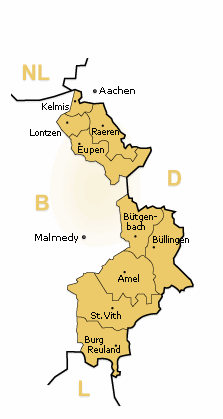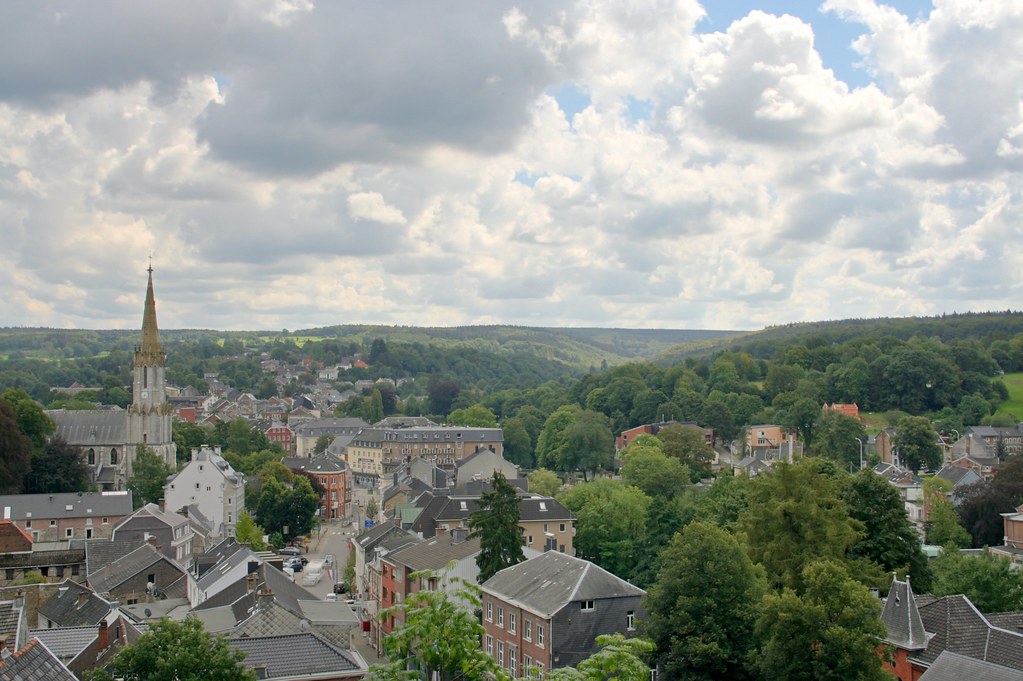In Belgium, ongoing tensions between Flemish-speaking Flanders and French-speaking Wallonia receives a lot of attention. However, there’s actually a third distinct Belgian linguistic community, the German-speaking people of the East Cantons. This community represents approximately 70,000 people, or a little less than one percent of the nation’s population. It retains a level of political independence and even its own parliament within the legal framework of the Belgian constitution.
I first encountered this geo-anomaly while researching Neutral Moresnet for an article I posted about a year ago. The existence of tiny slices of German culture within the confines of Belgian territory fascinated me.
Here German is the nearly universal mother tongue, complete with German-language television, a newspaper, radio broadcasting and a web presence. I don’t speak German, and I apologize in advance for the likely mangled title on this article (blame Google Translator). However it appears that all of these sites seem to be catering entirely to a German-speaking audience. Yet, they also fall within a “.be” (Belgian) Internet domain.
Historical Context

National boundaries changed frequently in these crossroads of Europe, emerging through cycles of treaties, annexations, warfare and social movements. The East Cantons provide an interesting case in point. They were part of the Low Countries extending back to medieval times and became part of Belgium when it declared independence in 1830. However, the East Cantons bounced to the German Confederation when the Dutch signed a treaty recognizing Belgian independence eight years later.
Belgium continued to claim a historical connection to the territory even after the loss. The lands eventually returned to Belgium as compensation after the First World War. Germany re-annexed the area during the Second World War and it returned to Belgium once again upon its conclusion. Thus, while residents retained a linguistic and cultural identity, they switched nationalities six times in barely a hundred years. Confusing? Indeed.
The Situation Today
The current configuration is a bit complicated. The East Cantons form a constitutionally established and protected cultural community within Belgium. Additionally, German serves as the official language. Residents there elect 25 deputies to the Parliament of the German-speaking Community for five year terms. The parliament maintains legislative power over matters of language, culture, education and related matters within its 854 square kilometre domain.
Nonetheless the German community still falls geographically within the province of Liège, itself a part of French-speaking Wallonia, within the Kingdom of Belgium. Thus, it’s somewhat akin to being a state within a state within a state,
It gets more tangled. Two distinct German-speaking enclaves form the East Cantons. Thus the German area includes the District of Eupen and the District of Sankt Vith. Those further subdivide into nine municipalities.
District of Eupen

The District of Eupen (map) is the smaller, northern enclave, bordering Germany and just touching the Netherlands at the BE-DE-NL tripoint. It divides further into four municipalities, Kelmis, Lontzen, Raeren and Eupen. The municipality of Eupen serves as the focal point for the East Cantons, analogous to its capital of a sort, the location of its parliament at Kaperberg, a focal point for tourism and a home to 25% of the population of the German-speaking areas. Lower-Frankish Limbourgian is a dominant dialect.
Even street names in Eupen tend to be German. None of this should be surprising when considering that Eupen is right on the border and a mere 20 kilometres away from the city of Aachen in Germany.
District of Sankt Vith

The District of Sankt Vith (map) is the larger more rural enclave to the south, with borders along Germany and Luxembourg. Here there are five municipalities, Bütgenbach, Büllingen, Amel, Burg Reuland and St. Vith. Moselle Frankish (Luxembourgish) is a common dialect.
Nationalistically, from what I’ve been able to uncover in my research, the preponderance of this ethnically-German population considers itself to be fully integrated within Belgium. Their Flemish and Wallonian countrymen also seem to be accepted them in the same manner. There seems to be little concern that their minority cultural identity will be impinged.
Nonetheless they are the quiet partner, overshadowed by much larger French and Flemish speaking communities.

Leave a Reply